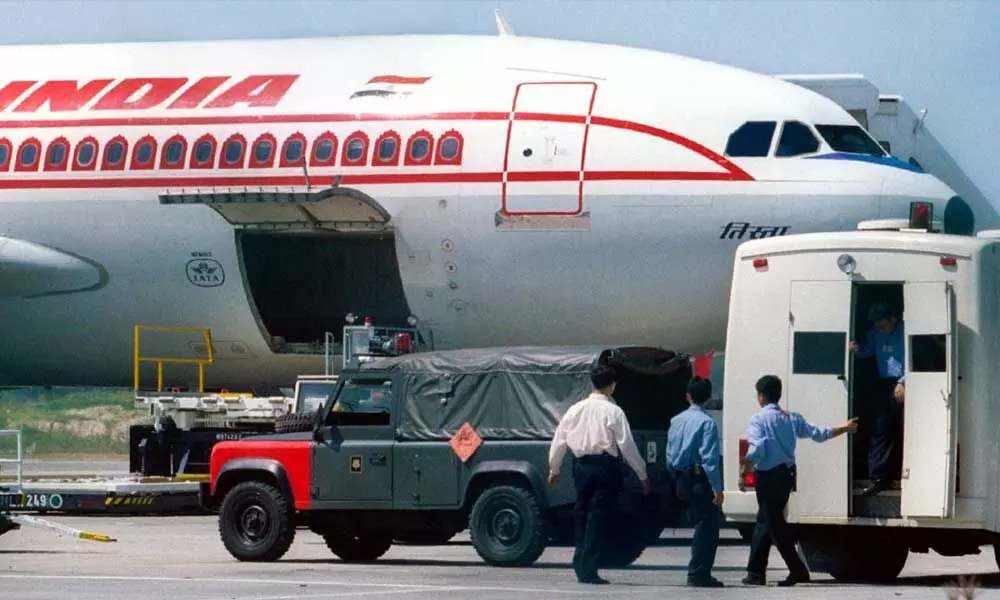Can Indian aviation sector survive the turbulence?
Aviation experts believe that measures such as the lower tax on jet fuel and reduction in multiple operational charges, including parking, airport and landing, are necessary for the industry to survive. Jet fuel, also called aviation turbine fuel (ATF) takes close to 30 per cent-40 per cent of the total cost of an airline
image for illustrative purpose

The aviation industry is still in a state of flux and continues to hope for financial and policy support from the government
India now has air transport bubbles with 23 countries. The international sector, down by 80-90 per cent from pre-Covid level, is expected to grow only marginally. Industry experts do not see profitability returning until the end of 2021. Indian aviation is expected to report losses of $4 billion in FY21.
The aviation industry was anticipated to provide 98 million jobs and generate $5.7 trillion in GDP by 2036, according to a pre-Covid forecast. But, then came the pandemic that put the aviation sector in a state of uncertainty. ICRA Ltd, a credit rating agency, in its report in December had anticipated a net loss of Rs 21,000 crore this fiscal year for Indian airlines due to travel restrictions. The industry will require an additional funding of Rs 37,000 crore from FY21 to FY23 to recover from the losses and debt.
Aviation experts believe that measures such as lower tax on jet fuel and reduction in multiple operational charges, including parking, airport and landing, are necessary for the industry to survive. Jet fuel, also called aviation turbine fuel (ATF) takes close to 30 per cent-40 percent of the total cost of an airline.
ATF prices in India are 45-50 per cent higher compared to the international markets.
Experts also feel that GST should be levied on fuel because a major expense for any aviation company is on fuel on which they pay VAT and excise that adds up to 35 per cent. If it can be covered under GST at 18 per cent, this will significantly reduce the costs of aviation on fuel by half.
ATA forecasts that the aviation industry will continue to suffer deep losses during 2021. The latest analyst predictions are more pessimistic than they were in the early summer of 2020. In June 2020, the analysts predicted that the industry would face a net loss reaching $84.3 billion by the end of 2020. However, a revised outlook for airline industry performance in 2020 and 2021 predicted that the industry would suffer deeper losses of up to $118.5 billion for 2020. But it would be able to cut those losses to $38 billion in 2021, the analysts say. IATA notices a trend that travelers are shifting towards domestic or short-haul travel in comparison to long-haul, as it is perceived safer. This indicates that while the whole aviation industry will see an improved performance in 2021 compared to 2020, the domestic markets are expected to perform better than international services. However, the road to full recovery is expected to be long and difficult as passenger volumes are not expected to return to 2019 levels until 2024 at the earliest.
Aviation market intelligence firm CAPA India projected in October that the Indian aviation industry will lose a combined $6-6.5 billion in FY21, of which airlines will account for $4-4.5 billion.
According to Mordor Intelligence, the aviation market is anticipated to register a CAGR of more than 3 per cent, during the forecast period 2021 to 2026. Increasing defense expenditure, mostly from the developing countries, may drive the procurement of military aircraft, thereby propelling the growth of the aviation market in the coming years. Lower air fares, growing living standards, and a growing middle-class in large, emerging markets, like China and India, are the major contributors to increased air travel. This has made the airlines operating in the regions to establish new routes and serve more passengers, by procuring new aircraft, thereby adding more seats. Replacement of aging commercial aircraft and the procurement of new generation commercial aircraft are the main factors driving the growth of the market.
"Domestic traffic in FY22 is expected to reach 70-80 percent of FY20 levels. International traffic is only expected to recover to 35-40 percent of FY20 levels. In the absence of a full recovery in higher-yielding segments such as corporate travel, airlines cannot be profitable," CAPA India said. The Indian aviation industry is still in a state of flux and continues to hope for financial and policy support from the government. Immediate credit support, lower tax rates on aviation fuel and imported aircraft parts for MRO, flexible use of the airspace and fully liberalised code sharing, among others, can make the Indian aviation industry not only more competitive but also distinctly attractive.

